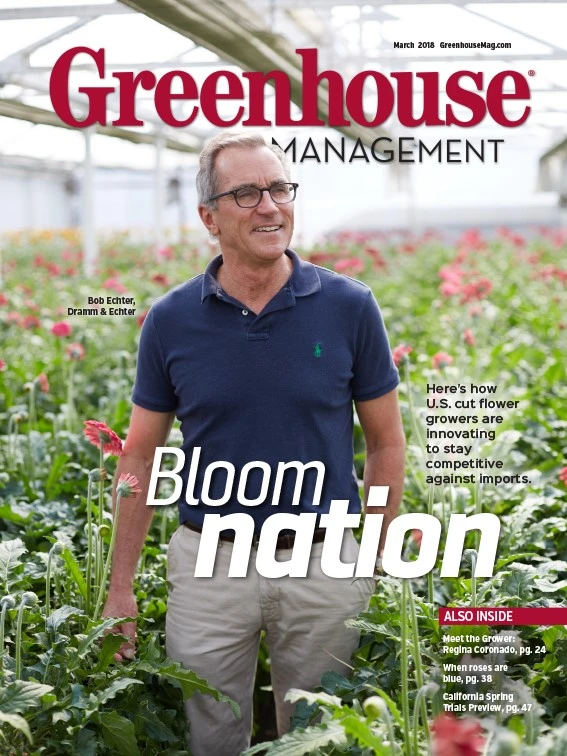
Luiz Grossman, the founder and CEO of Optionline, is an agronomist by trade, but is aiming to make his mark through his own high-tech creation.
The SMART device — which stands for Scanning Materials Using Advanced Recognition Technology — was recently debuted for the first time at a trade show in Brazil, Grossman’s home country and Optionline’s headquarters. The device gives growers a data-driven evaluation of their plant’s health.
“The goal is for anyone, whether they are using hydroponics, growing ornamentals or growing field crops, to be able to get advanced information on the nutritional state of their plant,” says Ron Jiminez, a regional manager at Optionline.
Instead of relying on the soil to obtain nutritional readings, the SMART device uses foliar readings to evaluate plant health. To use the device, a grower obtains multiple samples of plant material, places the material into glass vials and then into the scanner. The scanner then gives the grower information about the macro and micro nutrient levels.
Relying on data
According to Jiminez, the key to the SMART device’s utility is the database developed by the various scans. Each time a grower scans a plant — a poinsettia, for example — then that plant’s specific nutritional profile is developed from the nutritional reading. From there, any grower using the SMART device can test the same plant and compare their own data against the profile of the plant on file in order to determine if their plant is healthy.
Right now, Jiminez says Optionline has developed statistical profiles for citrus fruits and is currently working on bananas. For the moment, he says the profiles that are developed will depend on the demand for the product and what types of growers take interest in the scanner, which Grossman originally developed for his own personal use.
“It occurred to him to ask, ‘Why are we going to the soil when we could go directly to the plant?” Jiminez says.
Jiminez says that with enough data, profiles can be created for plants that are grown in specific climates and locations so growers can access a profile that best suits their specific needs.
A different take
Many growers already receive help from plant health labs when dealing with different problems. According to Jiminez, the SMART device offers something different because it provides quicker readings. Where a lab has to wait a day or two for the plant to completely dry, and can take around a week to send back results, the SMART device can offer a reading in as little as an hour with a margin of error included to account for water in the plant material.
“This is like the sniffer dog in the airport — it identifies something that needs attention,” Jiminez says.
He says the faster reading, in addition to the data-based plant profile, can help growers better identify problems and then deal with them faster.
“Anyone who grows anything knows that once you see visual symptoms of a problem, you’re already way down the road with that problem,” Jiminez says. “This allows you to take the nutritional temperature of your plant.”
Explore the March 2018 Issue
Check out more from this issue and find your next story to read.
Latest from Greenhouse Management
- Super Charged Moon Juice from Moon Valley Nurseries now available nationally
- 2025 Proven Winners Horticulture Scholarship applications now open
- How to improve inventory and shipping management in the greenhouse
- Leading Women of Horticulture: Anna Ball, Ball Hort, and Terri McEnaney, Bailey Nurseries
- GM CEA HERB Part 2: A guide to increasing the sowing density of culinary herbs
- GM CEA HERB Part 1: Best practices for producing culinary herbs in controlled environments
- USDA fires experts on invasive pests, including Asian citrus psyllid, chilli thrips
- CEA Alliance celebrates bipartisan introduction of Supporting Innovation in Agriculture Act





